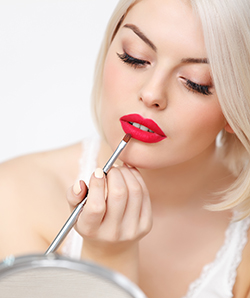Earlier this month, we attended the sixth anniversary of the MakeUp in NewYork show, an event that brings together professionals involved in the booming and ever-changing makeup sector. Combining an extensive exhibitor display and insightful conference program, with nearly 3,000 people attending over two days, the event didn’t disappoint. In case you missed it, here are some of the hot topics addressed at the event.
Indies challenge the status quo
Our ongoing tracking of indie brands via Kline’s Beauty’s Most Buyable Brands: Global Tracking Service highlights the fact that independent brands are a mainstay of this market, providing a significant source of untapped revenues. This year’s event spotlighted numerous independent brands, as well as included a roundtable discussion on the topic. Contributors to the roundtable panel, such as Nicole Masson, Vice President of Product Development at MAC Cosmetics, reminisced about MAC’s time as an independent brand until it was scooped up by Estée Lauder, while Tria Ayyagari, Senior Vice President of Global Marketing at Maybelline, even noted that independent brands are Maybelline’s main competitors.
Yes, Maybelline, the brand ranked as the leader in the U.S. makeup category by Kline in 2015, is rattled by the innovation coming from independent brands. The brand is not wrong to be alarmed by independent brands. In today’s world, indies are considered trendsetters, and consumers are much less brand loyal to the mainstay brands of the cosmetics world than they used to be. From Bitter Lace Beauty’s Prism Rainbow Highlighter to Becca Cosmetics’ Champagne Highlighter, indie brands know how to strike a chord with consumers and make a limited edition product desirable to the masses. This fear that consumers have of missing out on an effective, limited edition or unique product is an asset to a makeup brand’s strategy, as well as a very good reason why innovation is so important to beauty brands today. L’Oréal’s recent acquisition of IT Cosmetics, a brand highlighted in our prior reports on the indies market, is further proof that major beauty companies see the value indies can provide to a brand portfolio. Kline will be covering the latest and trendiest brands to grace the global beauty landscape in our new Beauty’s Most Buyable Brands: Global Tracking Service.
Experiences are everywhere
Another topic that was evident throughout every session at the event was the notion that consumers are looking to establish a deeper connection with their beauty brands. According to our soon-to-be-published Boutique Beauty Retailers: Channel Analysis and Opportunities report, beauty brands’ own freestanding stores are on the rise in 2016 partly due to consumers’ desire for a unique in-store experience. Brands are doing what they can to interact with their customers and provide meaningful services. Last year, MAC opened its first salon on the Upper East Side in an effort to better provide consumers with an intimate setting to get quick and easy makeup services. Estée Lauder’s Bobbi Brown brand just recently launched a unique Uber Retouch campaign, where Bobbi Brown makeup artists drive around in Ubers in Los Angeles and New York City to give makeup touch-ups to riders in 10 minutes or less. These in-store and brand ambassador experiences help create a unique brand identity, which is crucial in the beauty industry.
For more detailed information on these hot topics, be sure to explore our upcoming beauty goodies: Cosmetics & Toiletries USA, Beauty’s Most Buyable Brands: Global Tracking Service, Boutique Beauty Retailers: Channel Analysis and Opportunities, and Beauty Retailing USA: Channel Analysis and Opportunities, which offer a full picture of the beauty industry in a clear, accurate, and consistent manner.

